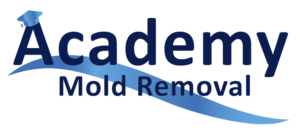Why Attic Mold Removal is Crucial for Your Family’s Health
September 21, 2024Attic Mold Removal: Effective Solutions for a Clean and Safe Attic
September 21, 2024Mold in your attic can quickly lead to not only health concerns but also serious roof damage if left untreated. Proper attic mold removal is essential to protect your home’s structure and prevent costly repairs. This step-by-step guide will walk you through the process of mold removal while also offering tips to safeguard your roof and avoid future mold growth.
Step 1: Identify the Mold Problem
Before starting the attic mold removal process, the first step is identifying the scope of the issue. Mold typically appears as black, green, or white patches on surfaces like wood, insulation, or drywall. It often has a musty odor, which can be a key indicator of its presence, even if the mold isn’t immediately visible. Pay close attention to areas where moisture is likely to collect, such as near leaks, roof vents, or around poorly insulated spaces.
Step 2: Address the Source of Moisture
Mold cannot thrive without moisture, so it’s critical to address the source of the dampness before attempting any attic mold removal. Common causes include roof leaks, poor ventilation, and inadequate insulation. Inspect your roof for any damaged or missing shingles, and ensure your attic has proper ventilation to regulate humidity levels. Fixing these issues first is essential to prevent mold from returning after removal.
Step 3: Prepare the Area and Gather Protective Gear
Mold removal can release spores into the air, so protecting yourself is important. Before starting, make sure to wear protective gear, including:
- A mask or respirator to avoid inhaling spores
- Gloves to protect your skin from mold and cleaning chemicals
- Safety goggles to shield your eyes
Seal off the attic from the rest of the house by closing doors and covering air vents to prevent mold spores from spreading during the attic mold removal process.
Step 4: Clean and Remove Mold-Affected Areas
For effective attic mold removal, it’s important to use the right cleaning techniques. Start by scrubbing mold-infested areas with a solution of water and detergent, or use commercial mold-killing products for tougher spots. For larger infestations, vinegar or diluted bleach can be effective solutions.
If the mold has deeply penetrated materials like insulation or wood, those materials may need to be removed and replaced. Mold can cause significant damage to your attic’s structure if left untreated, so don’t hesitate to remove and replace severely affected areas.
Step 5: Dry and Ventilate the Attic
After cleaning, it’s essential to dry the attic thoroughly to ensure no moisture remains. A dehumidifier can help speed up the drying process, and fans can improve air circulation. Proper ventilation is one of the best long-term solutions for preventing mold growth, as it helps regulate temperature and moisture levels in your attic. Keeping your attic dry and well-ventilated is a key prevention method once the attic mold removal is complete.
Step 6: Prevent Future Mold Growth and Roof Damage
To prevent future mold issues and roof damage, follow these key tips:
- Regular Roof Inspections: Check your roof regularly for signs of damage, especially after storms or during rainy seasons. Promptly repairing leaks will prevent moisture from seeping into your attic.
- Improve Attic Ventilation: Proper airflow is essential to preventing moisture buildup. Installing roof vents or using attic fans can help maintain the ideal humidity levels to avoid future mold growth.
- Insulate Effectively: Proper insulation will prevent warm air from escaping into the attic, which can cause condensation and lead to mold growth. Ensure your attic is properly insulated to protect against moisture.
- Seal Gaps and Cracks: Ensure your attic is sealed against outside air and moisture by filling in any gaps or cracks in the roof, walls, or attic windows.
Conclusion
Mold in the attic can cause serious problems, from health risks to roof damage. Following these step-by-step tips for attic mold removal will not only eliminate existing mold but also help you protect your home from future infestations. By addressing moisture sources, cleaning thoroughly, and improving ventilation, you can keep your attic mold-free and prevent costly roof damage for years to come.
